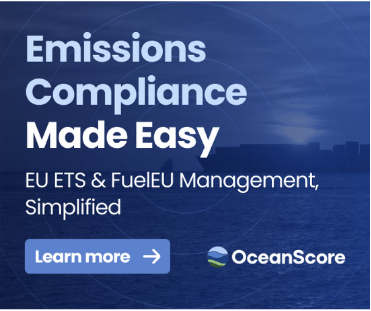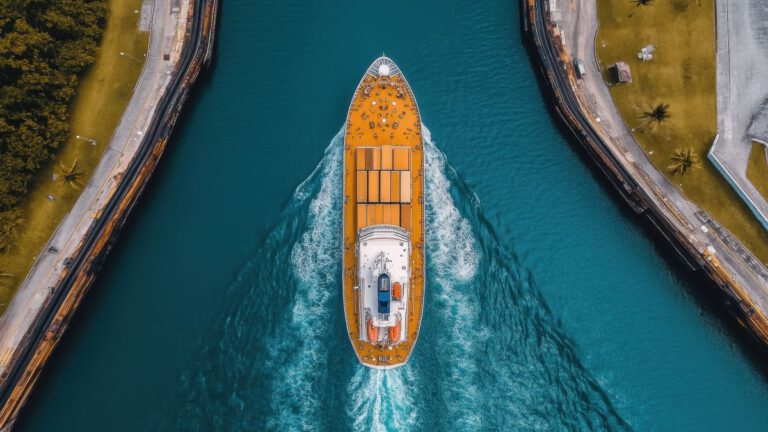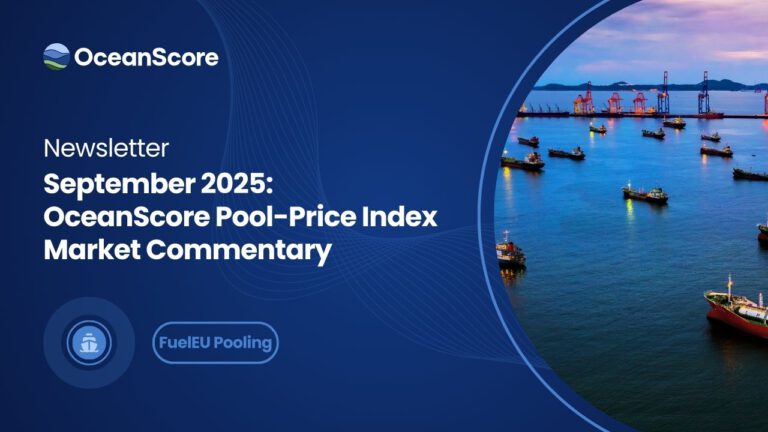Drewry Emissions Ranking: OceanScore #2 for Maritime Emissions Accuracy
As maritime decarbonization accelerates and regulations expand, precision in maritime CO₂ data has become a competitive advantage for freight forwarders rather than just a compliance requirement. This shift is highlighted in the latest Drewry emissions ranking, where OceanScore was recognised as the second most accurate emissions measurement provider. In this evolving landscape, accuracy in emissions data now signals operational and commercial leadership.
For freight forwarders and cargo owners, accuracy in emissions data isn’t just about reporting, it has direct financial implications. Overestimating emissions can lead to higher costs, while underestimating them can expose companies to regulatory and reputational risks. In a market where carbon emissions are increasingly scrutinised, confidence in your emissions data brings clarity and control over costs, enabling more sustainable and cost-effective decisions.
Recognised for Accuracy in the Drewry Emissions Ranking: Trusted for Impact
In Drewry’s latest Emissions Measurement Providers Buyers Guide, OceanScore was ranked the second most accurate emissions platform, outperforming major providers.
This recognition highlights what our partners already know: when emissions data is constantly benchmarked and fine-tuned against primary data, not averaged, everything from cost analysis to compliance reporting becomes more reliable.
Bringing Accuracy to Life: Inside OceanScore CargoFP’s Emissions Modelling
CargoFP, our AI-powered emissions intelligence solution, benefits from the precision of OceanScore’s advanced modelling capabilities. Designed for freight forwarders, shippers, and third-party platforms, it delivers accurate, voyage-specific CO₂ insights powered by real-time vessel tracking and primary data inputs.
What sets CargoFP apart?
- Voyage-specific emissions based on real-time AIS data from the entire containerised fleet
- AI-enhanced estimations of cargo on board, tailored to voyage characteristics
- Daily primary vessel data, benchmarked and refined using unique data insights
- Easy API integration into logistics, reporting, or sustainability platforms
Unlike solutions that rely on static assumptions, CargoFP reflects actual ship behaviour such as speed, route, and fuel consumption on every voyage.
This level of transparency helps our clients better understand cost exposures, evaluate past voyages, and bring added confidence to carbon-related discussions
From EU ETS to IMO Net-Zero Framework: The Carbon Cost Curve Is Rising
The EU Emissions Trading System (EU ETS) is a cornerstone of Europe’s efforts to reduce greenhouse gas emissions. Under this system, shipowners are required to surrender a European Union Allowance (EUA) for every ton of carbon dioxide (CO₂) emitted by their vessels in ETS scope. The EU ETS imposes a carbon cost directly on shipping operations, which is typically passed on to the LSPs. As a result, LSPs face surcharges related to emissions costs, making it essential to factor in these additional expenses when negotiating freight contracts.
However, handling the complexities of EU ETS regulations is no simple task. Freight forwarders need to ensure that they are accurately tracking their emissions and benchmarking their emissions-related costs against the freight rates. Emissions data can vary significantly depending on the carrier, route, and operational factors, making it very difficult to perform any meaningful benchmarking with current industry standards, as they rely on broad averages. CargoFP, however, empowers forwarders to continuously benchmark their ETS cost exposure vs predicted costs with our highly accurate emissions reporting tool, making crucial data available to the right teams to assist with contract negotiations. “The importance of benchmarking these environmental costs will only increase as we are only in phase 2 of implementation (70% phase-in), the final phase 3 will be introduced in 2026, and the cost will be 100%.” says Thomas Smith, Head of Cargo Solutions, OceanScore.
As the world progresses towards stricter emissions regulations, the scope of carbon cost pressures is expanding beyond regional systems like the EU ETS. The IMO is preparing global market-based measures, including carbon levies and fuel taxation, that will put further price pressure on emissions. As compliance burdens rise, many stakeholders are turning to high-fidelity data to improve the accuracy of emissions estimates, cost attribution, and long-term planning under evolving carbon regulations.
The Bottom Line
OceanScore is proud to lead in accuracy, placing second in the Drewry emissions ranking. This recognition signals the beginning of a new era in emissions reporting, where precision is no longer just a requirement under systems like the EU ETS but a strategic advantage.
With CargoFP, we’re helping our partners embrace this new level of reporting accuracy. Our platform provides a more precise, voyage-specific view of emissions, equipping freight forwarders and cargo owners with the insights needed to confidently navigate the evolving carbon cost structures and compliance requirements.
This is just the start. As carbon markets and global regulations continue to evolve, CargoFP is at the forefront, empowering our clients with the tools to stay ahead. In the new carbon economy, accuracy isn’t just about meeting compliance, it’s about gaining a competitive edge. The demand for transparency in emissions data will only grow, and those who embrace it now will be the ones to thrive in the future. As the industry adapts to new carbon markets and regulations, we remain committed to providing high-quality emissions data that helps our clients lead the way in sustainable logistics.
Click here to test CargoFP today, see the difference precision makes.





